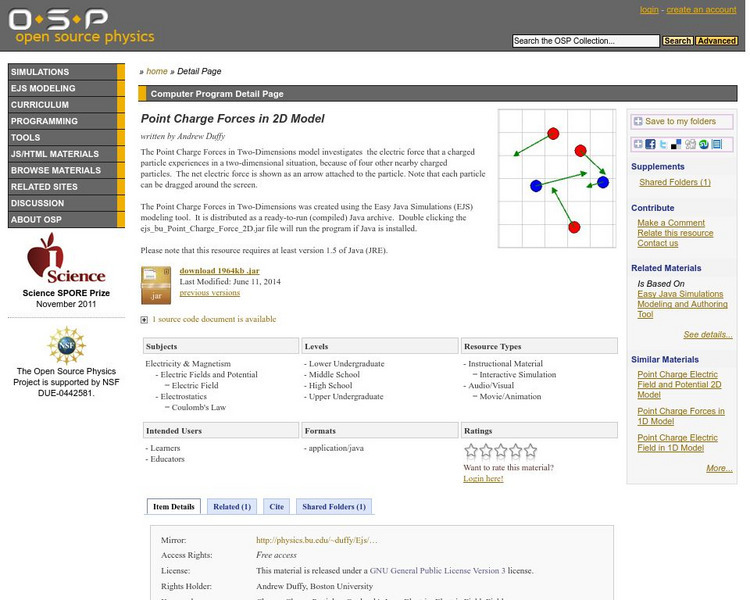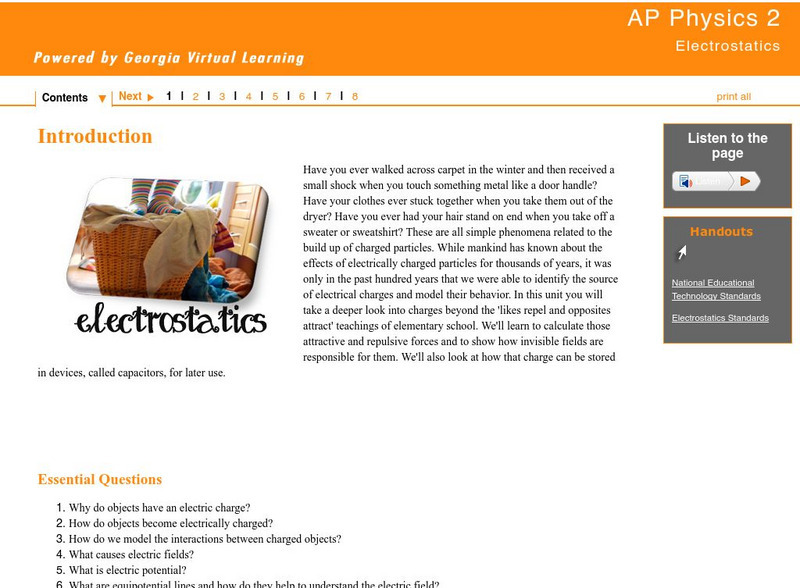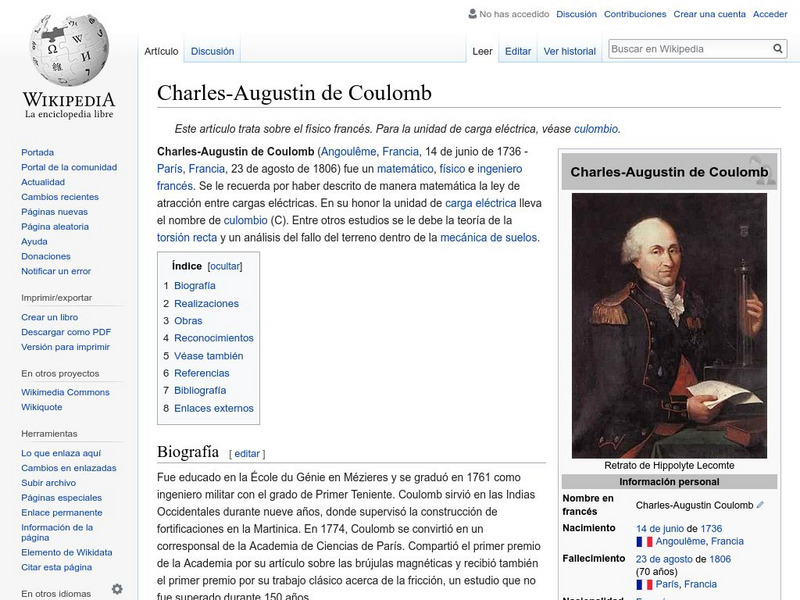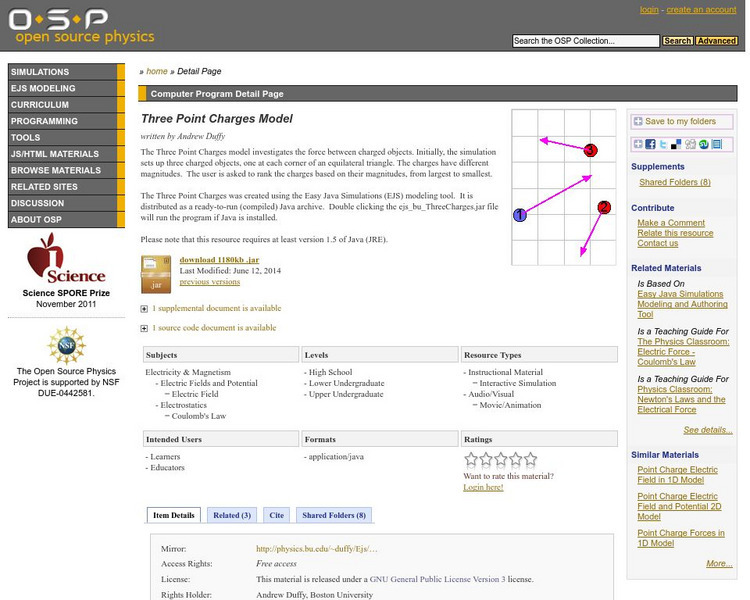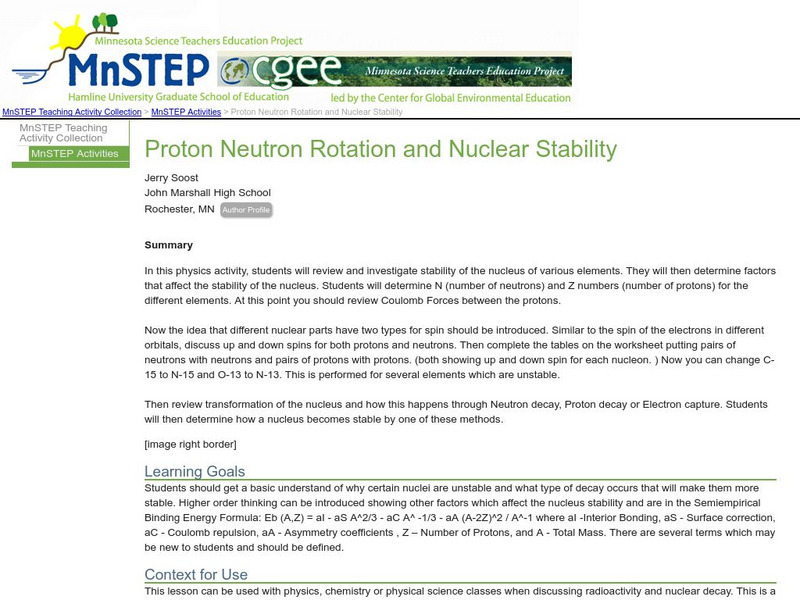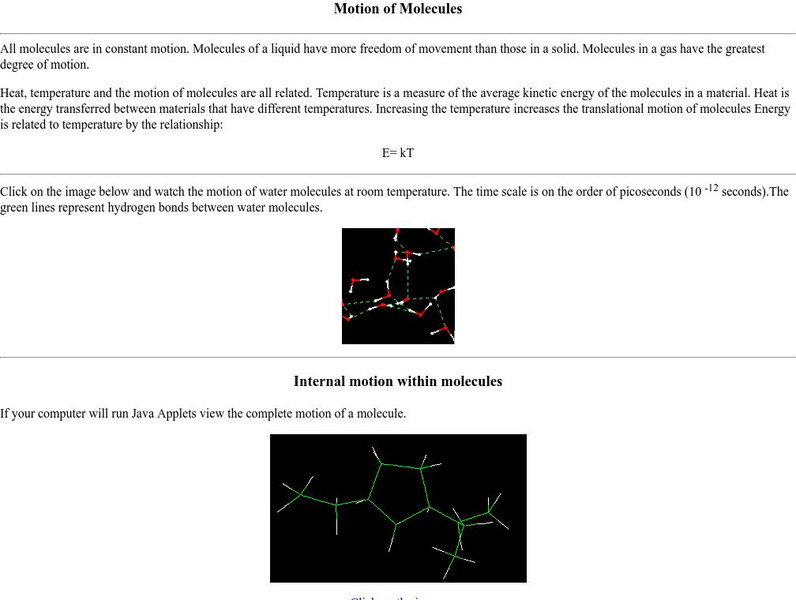Khan Academy
Khan Academy: Coulomb's Law and Electric Force Review
Review how an electric force behaves between like or opposite charges, and its dependence on separation distance and charge magnitude. Compare the electric force and gravitational force.
Science and Mathematics Initiative for Learning Enhancement (SMILE)
Smile: Qualitative Coulomb's Law Lesson
A detailed lesson plan for helping learners to qualitatively experience the force versus distance relationship of Coulomb's law.
American Association of Physics Teachers
Com Padre Digital Library: Open Source Physics: Point Charge Forces in 1 D Model
Virtual simulation investigating the electric force that one charged particle exerts on another. Plot a graph of the electric force as a function of position.
American Association of Physics Teachers
Com Padre Digital Library: Open Source Physics: Point Charge Forces in 2 D Model
In this simulation, examine the electric force that a charged particle gains from nearby charged particles in a two-dimensional state. See the net electric force shown as an arrow attached to the particle.
CK-12 Foundation
Ck 12: Physics Simulation: Coulomb's Law
[Free Registration/Login Required] Learn how the placement of charges leads to an electric field and electric potential patterns in nearby space using our interactive simulation. A PDF worksheet and a video tutorial are also available....
Cosmo Learning
Cosmo Learning: Electric Force
Need to review electric force? This collection of eight video lectures focuses on electric force. Lectures vary in length giving examples of problems to help with the understanding of electric force. Lectures are from a physics course...
ClassFlow
Class Flow: Coulomb's Law
[Free Registration/Login Required] This resource provides information about Coulomb's law.
ClassFlow
Class Flow: Forces in Action
[Free Registration/Login Required] In this unit children apply their knowledge of a variety of forces to contexts in which objects are stationary because forces on them are balanced. Children learn about the changes in motion which occur...
Georgia Department of Education
Ga Virtual Learning: Ap Physics 2: Electrostatics
In this unit students take a deeper look into charges beyond the simplified 'opposites attract." Students learn to calculate those attractive and repulsive forces and to show how invisible fields are responsible for them.
Wikimedia
Wikipedia: Charles Augustin De Coulomb
Spanish-language site lets students discover the life and work of this physicist and engineer, who is known for his studies of electric charges.
American Association of Physics Teachers
Com Padre Digital Library: Open Source Physics: Three Point Charges Model
In this simulation, investigate the force between charged objects. Rank three charged objects of different magnitudes, then create a method to determine the ranking of the charge magnitudes. Finally, devise a new method of determining...
Curated OER
Coulomb's Law Box
A complete lab where a student verifies the force versus distance relationship of Coulomb's Law.
Khan Academy
Khan Academy: Electrical Engineering: Electrostatics
Electrostatics is the study of forces between charges, as described by Coulomb's Law. We develop the concept of an electric field surrounding charges. We work through examples of the electric field near a line, and near a plane, and...
Science Education Resource Center at Carleton College
Serc: Proton Neutron Rotation and Nuclear Stability
In this activity, learners will review and investigate the stability of the nucleus of various elements and determine factors that affect that stability. Students will get an understanding of why certain nuclei are unstable and what type...
New York University
Nyu: Math Mol: Motion of Molecules
Examine the link between molecular motion and energy. Observe the movement of a molecule at room temperature. Learn about the different types of molecular motion.
Concord Consortium
The Concord Consortium: Molecular Workbench: Uniform Distribution of Charges
Observe the transfer of an electrical charge to an object and how those charges are evenly distributed across the object's surface.
Physics Classroom
The Physics Classroom: Static Electricity: Lesson 3: Inverse Square Law
Electrical force between two electrically charged objects is inversely related to the distance between the two objects. Investigate why this becomes the inverse square law of physics. Engage in the Coulomb's Law interactive and check...



